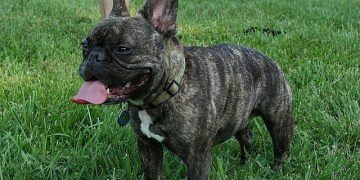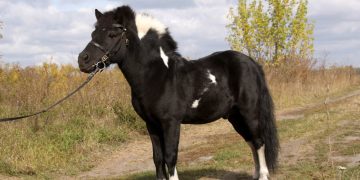Transitioning your dog from puppy food to adult dog food is an essential step in their growth and development. Puppies require different nutrients than adult dogs, and switching their diet at the right time can support their health, energy levels, and overall well-being. But knowing when to make the switch—and how to do it correctly—can be challenging for pet owners. Here, we’ll break down everything you need to know about when to transition from puppy to adult dog food and how to make the process as smooth as possible for your furry friend.
1. Understanding the Nutritional Differences Between Puppy and Adult Dog Food
Puppy food and adult dog food are formulated differently to meet the unique needs of dogs at different stages of life:
- Higher Protein Content: Puppies are in a rapid growth phase and require more protein to support muscle development, tissue growth, and organ function. Puppy food contains higher protein levels than adult dog food.
- Increased Caloric Density: Puppies have high energy needs, which means they need more calories per pound than adult dogs. Puppy food is typically more calorie-dense to provide this extra energy.
- Specialized Nutrients: Puppy food contains essential nutrients like calcium, phosphorus, DHA (an omega-3 fatty acid), and vitamins, which support bone growth, brain development, and immune health.
Once your puppy reaches maturity, their body no longer requires these extra nutrients and calories. In fact, continuing with a high-calorie, nutrient-dense diet past the puppy stage can lead to weight gain and other health issues.
Key Takeaway: Puppy food is specially designed to support growth, energy, and development, while adult dog food is formulated to maintain health and prevent weight gain.
2. How to Determine the Right Time to Switch
The right time to switch from puppy to adult dog food depends primarily on your dog’s breed and size, as larger breeds mature more slowly than smaller ones. Here’s a general guideline based on breed size:
- Small Breeds (Under 20 pounds): Small breeds mature faster and often reach adulthood between 9-12 months. You can usually switch them to adult food around this time.
- Medium Breeds (20-50 pounds): Medium-sized breeds generally reach adulthood between 12-15 months, making this a suitable time to transition.
- Large Breeds (50 pounds and above): Large breeds mature more slowly, typically reaching adulthood between 18-24 months. Switching too early can lead to developmental issues, so waiting until they’re fully mature is essential.
Key Takeaway: The timing of the switch depends on your dog’s breed and size, with smaller breeds transitioning sooner and larger breeds requiring a longer growth period.
3. Signs That Your Puppy is Ready for Adult Dog Food
Beyond age and size, there are specific signs to look for to determine if your puppy is ready to transition to adult food:
- Decreased Growth Rate: Puppies grow rapidly, but as they approach adulthood, their growth rate slows significantly. If your dog’s growth has plateaued, it might be time to switch.
- Decreased Appetite: Puppies often have large appetites, but as they mature, they may eat less or seem less interested in food. This can indicate that their nutritional needs are changing.
- Weight Maintenance: If your dog maintains a healthy weight on puppy food without gaining or losing, this is a sign they’re stabilizing, and a less calorie-dense adult formula may be appropriate.
Key Takeaway: Look for signs like a slower growth rate, decreased appetite, and stable weight as indicators that your puppy might be ready for adult food.
4. How to Transition from Puppy to Adult Dog Food Gradually
Switching from puppy to adult food should be a gradual process. Sudden changes in diet can upset a dog’s digestive system, leading to issues like vomiting, diarrhea, or general discomfort. Follow these steps to ensure a smooth transition:
- Start Slowly: Begin by mixing 25% adult food with 75% puppy food. Allow your dog to adjust to this blend for 2-3 days.
- Gradually Increase Adult Food: After a few days, mix 50% adult food with 50% puppy food. Monitor your dog for any signs of digestive issues. If they adjust well, continue for another few days.
- Move to 75% Adult Food: After about a week, increase to 75% adult food and 25% puppy food for another few days. This gradual approach allows your dog’s digestive system to adjust without shock.
- Complete the Switch: By the end of the transition period (typically 10-14 days), your dog should be fully on adult food.
Key Takeaway: A gradual switch over 1-2 weeks allows your dog’s digestive system to adjust, reducing the risk of gastrointestinal upset.
5. Choosing the Right Adult Dog Food
Once your dog is ready to transition, selecting a high-quality adult dog food is essential. Here’s what to look for:
- Quality Ingredients: Look for real meat (like chicken, beef, or fish) as the first ingredient. Avoid foods with fillers like corn, soy, or artificial additives.
- Complete and Balanced Nutrition: Ensure the food is labeled as “complete and balanced,” meaning it provides all the essential nutrients in the right proportions.
- Consider Special Needs: Some adult dogs have specific dietary needs based on factors like allergies, skin conditions, or joint health. If your dog has special requirements, consult your vet for recommendations.
Key Takeaway: Quality, balanced nutrition is crucial for adult dogs, so choose a food with high-quality ingredients and consult your vet if your dog has unique dietary needs.
6. Common Mistakes to Avoid When Switching Dog Food
Transitioning to adult food might seem straightforward, but several common mistakes can disrupt your dog’s health. Here are some to avoid:
- Switching Too Early or Too Late: Switching too early can deprive puppies of essential nutrients, while switching too late can lead to weight gain and health issues. Always consult with your vet if you’re unsure.
- Not Following a Transition Plan: Sudden changes in diet can lead to digestive upset. Stick to the gradual transition plan to avoid issues.
- Ignoring Your Dog’s Response: Pay attention to how your dog responds to the new food. If they show signs of digestive issues, return to the previous blend for a few more days before continuing the transition.
Key Takeaway: Avoiding these common mistakes can help make the transition smoother and support your dog’s overall health.
7. Monitoring Your Dog’s Health After the Switch
Once your dog has transitioned to adult food, monitor their health and behavior closely. Here are some things to look out for:
- Weight Management: Adult dog food has fewer calories than puppy food, but it’s still important to monitor your dog’s weight to ensure they’re not gaining or losing too much.
- Energy Levels: Watch for changes in energy levels, which should be steady on adult food. If they seem lethargic or hyperactive, their diet may need adjustment.
- Coat and Skin Condition: A healthy diet should support a shiny coat and healthy skin. If you notice changes in their coat or skin, consult your vet.
Key Takeaway: Monitoring weight, energy, and skin condition can help you ensure your dog is thriving on their new diet.
Conclusion: The Right Timing and Transition Are Key
Switching from puppy to adult dog food is a critical step in your dog’s growth and development, supporting a healthy transition from youth to adulthood. By understanding your dog’s unique nutritional needs and following a gradual transition plan, you can make this change smooth and beneficial. Always keep your dog’s breed, age, size, and individual needs in mind, and don’t hesitate to consult with a veterinarian if you have questions.
Ultimately, making this switch at the right time will help keep your furry friend healthy, happy, and thriving for years to come.

























